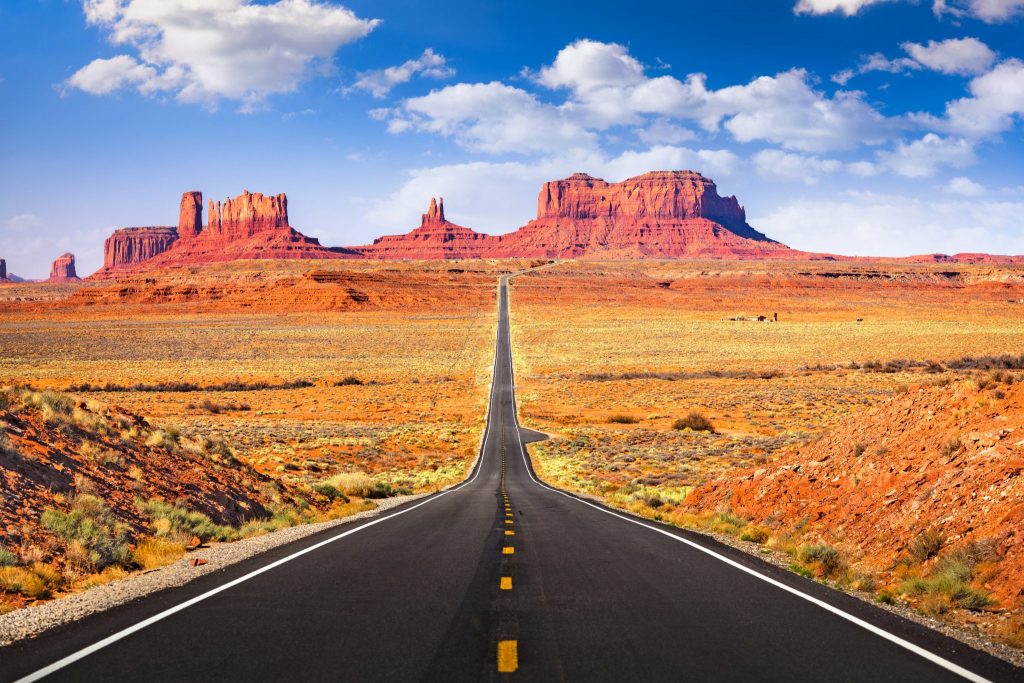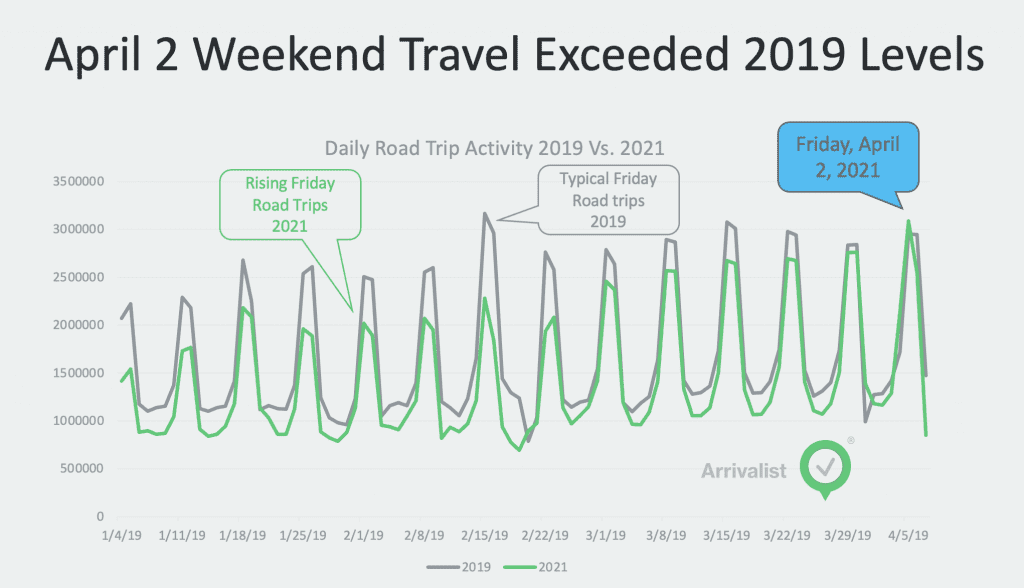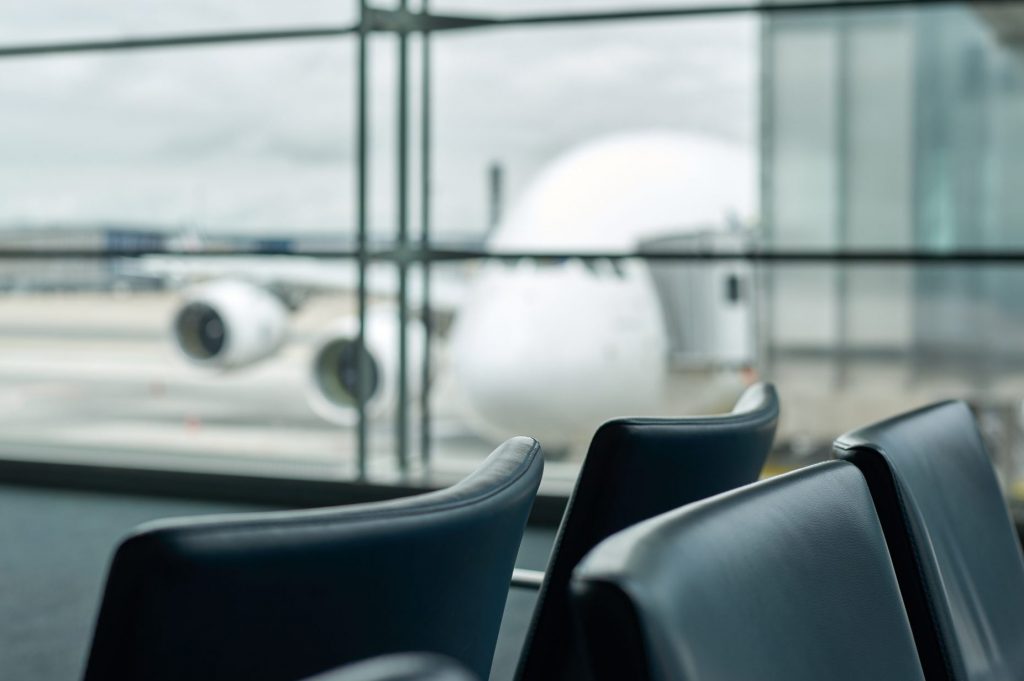American Road Trips Surpass 2019 Levels as Latest Indicator of Travel Recovery

Skift Take
If the week of April 2 was the week that U.S. travel started its recovery, then the week of April 7 is the one that confirmed the nation is on the move — the great American family road trip is back, stronger than ever.
Newly released data from location intelligence provider Arrivalist’s Daily Travel Index, which tracks American road trips, shows that for the first time since the pandemic, road trip vacations have surpassed 2019 levels.
“This is the moment we’ve been waiting for when we launched the Daily Travel Index: the moment when road trip activity post-pandemic, for the first time on a year-over-year basis, is exceeding levels from the same time in the year prior," said Cree Lawson, founder of Arrivalist.

Road Trips of 250 miles or more over Easter weekend in 2021 were a full 35 percent higher than long road trips during the same period of time in 2019. "That's a big leap," Lawson said. "People do travel further over holiday weekend on average, but that's a big jump." The significance of this new data is that road trip activity is usually the first leading indicator of a travel recovery, leading over airline capacity return.
“We've seen times last year when there were false alarms, with road trip activity rising close to pre-pandemic levels — around July 4, Thanksgiving and Labor Day 2020 — but this was the first time that we’ve clearly seen road trip activity exceed pre-pandemic levels," Lawson said, adding that it happened at Easter.
Looking at year-over-year data, however, shows that road trip activity in 2021 is still running 15 percent behind 2019 levels.
"The growth in longer road trips suggests that Americans are taking longer drive market vacations, perhaps in order to compensate for reduced air service or a reluctance to fly," Lawson said. Short and medium road trips, on the other hand —ranging 50-150 miles and 150-250 miles, respectively — are still hovering around 84 percent of 2019 levels.
Arrivalist tracks mobile location data insights to 130 cities, states, countries, amusement parks, airports and hotels that attract travelers. As road trips surge, travelers’ preferences are revealed in terms of top drive-market destinations, the average drive distance and evolving consumer habits on the other side of recovery.
Trends show people going to remote areas, beaches and natural settings, while less likely to visit hotspots and city centers. For the week March 27-April 2 2021 versus 2020, according to the Daily Travel Index, the top 10 states showing the highest surge in road trips were Nevada, New York, Maryland, Florida, Wyoming, Colorado, Montana, Texas and Illinois.
Lawson said that data also showed there were vast shifts between hotel stays and vacation rental stays. Skift’s reports on the great American family road trip further detail this latter trend.
“It’s easy to overlook, people taking trips to visit friends and relatives, but it is clearly showing up in our data — and that's further whetting Americans’ appetite for the longer road trip or the flying vacation," Lawson said, noting these road trips were the hidden catalyst for travel's return. "We’ll be watching the trips of 250 or more miles very closely.”




